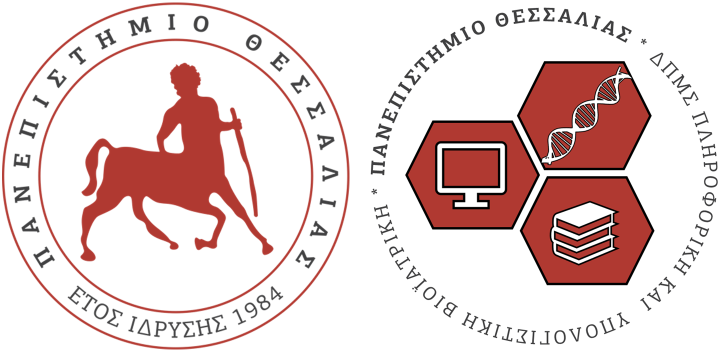INFORMATION SYSTEMS FOR BIOMEDICAL DATABASES
B’ Semester
7.5 ECTS
Coordinator:
Theodoros Tzouramanis
Teaching Staff:
Georgios Spathoulas, Theodoros Tzouramanis.
Click on the attachment to view or download the course outline.
Information Systems for Biomedical Databases
Description.
Introduction to information systems and database systems. Information systems and database systems architectures and design Data modeling using the entity – relationship model. The database relational model. Relational algebra. The SQL language. SQL query optimization Data security and privacy-preservation topics and techniques. Data types in bioinformatics. Biological and medical databases. Databases of literature, protein and DNA sequences, structures, folders and families, gene expression databases, other specialised forms of databases. Examples of biomedical databases. Advanced topics and applications.
Bibliography:
1. Elmasri, R., & Navathe, S. (2015). Fundamentals of database systems. Addison-Wesley Publishing Company.
2. Revesz, P. (2009). Introduction to databases: from biological to spatio-temporal. Springer Science & Business Media.
3. Collen, M. F. (2011). Computer medical databases: the first six decades (1950–2010). Springer Science & Business Media.
4. Wong, S. T. (Ed.). (2012). Medical image databases (Vol. 465). Springer Science & Business Media.
5. Bishop, M. J. (1999). Genetic databases. Academic Press.
6. Wiederhold, G. (1981). Databases in Health Care. In Databases for Health Care (pp. 1-16). Springer, Berlin, Heidelberg.
Η βαθμολογία του μαθήματος προκύπτει από τη διεκπεραίωση τόσο εργασιών όσο και από την τελική γραπτή εξέταση.
- PAPASIOPOULOU 2-4, LAMIA
- MSc Programme Secretariat: 3rd k.l.m. P.E.O. Lamia - Athens, 35100, Lamia, Tel: 22310 – 60225 60226
- icb[at]dib.uth.gr


